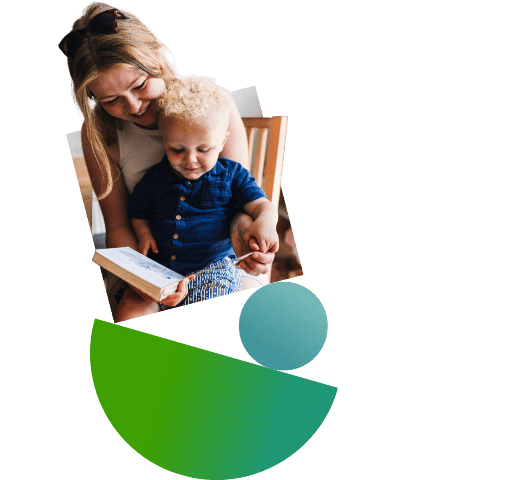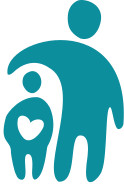Course modules
1. Welcome and introduction
1.1 Welcome!
1.2 Moving through the course
1.3 Why is knowing about brain development useful?
1.4 The Solihull Approach: a reminder
1.5 References
2. Antenatal brain development
2.1 Foetal behaviour
2.2 Brain development in utero
2.3 Brain development and relationships
2.4 Genetics and the environment
2.5 Risk factors: alcohol and drug use
2.6 Risk factors: eating disorders
2.7 Risk factors: domestic abuse
2.8 Risk factors: maternal stress
2.9 Chronic stress and too little stress
2.10 Summary of brain development in the uterus
3. Early years brain development
3.1 Introduction
3.2 The structure of the brain
3.3 More about the limbic system
3.4 Critical stages of brain development
3.5 Parenting and brain development
4. Mirror neurones
4.1 Introduction
4.2 Discovery of mirror neurones
4.3 A slow realisation
4.4 From monkeys to humans
4.5 Human mirror neurone system
4.6 The Mirror Neurone System
4.7 The mirror neurone system and evolution
4.8 More about MNS and evolution
4.9 What does the discovery of mirror neurones mean?
4.10 Understanding
4.11 Intent
4.12 Mirror neurones and emotion
4.13 Avoiding food poisoning
5. More about mirror neurones
5.1 Very early mirroring
5.2 Mirroring from birth
5.3 Developing an understanding of another’s mind
5.4 More about the brain developing
5.5 What is empathy?
5.6 Learning empathy
5.7 Someone stubs their toe
5.8 Mirroring body language
5.9 Recap
5.10 Mirroring body movements
5.11 Mirror neurones and autism
5.12 Implications of understanding mirror neurones
6. The environment and brain development
6.1 Key messages about the first 3 years of life
6.2 Serve and return interaction shapes brain circuitry
6.3 The role of experience
6.4 Trauma, neglect and stress
6.5 Attachment and brain development
7. Trauma and brain development
7.1 Dissociation: a reaction to trauma
7.2 More about dissociation
7.3 Memories and trauma
7.4 Brain development and emotional health (birth to 3 years)
8. Adolescent brain development
8.1 Middle childhood
8.2 Adolescent brain and trauma
8.3 Adolescence as a transition
8.4 Adolescent brain structure
8.5 The importance of the Solihull Approach model during the teenage years
8.6 Teenage brain development
8.7 The teenage brain and facial recognition
8.8 Facial recognition experiment
8.9 Implications of facial recognition
9. Adolescents and sleep
9.1 Teenagers and sleep
9.2 Sleep and physiological changes
9.3 Teenagers’ sleep patterns
9.4 Society and sleep
10. Risk taking
10.1 Definition of risk-taking
10.2 Why do adolescents take risks?
10.3 Estimating risk
10.4 Role of risk-taking in development
10.5 Why does risk taking increase?
10.6 Two models
10.7 Adolescents’ response to rewards
10.8 Systems in the brain
10.9 Accelerator is on before braking system is ready
11. Risk taking and peers
11.1 Peer pressure and risk taking
11.2 Why is risk taking linked to peers?
11.3 An experiment: risk taking in groups vs alone
11.4 The results
12. Drug and alcohol use
12.1 Drugs and the adolescent brain
12.2 Alcohol and brain development
13. Sensitivity to social rejection
13.1 Social rejection
13.2 A mismatch
14. Impact of adolescent brain development
14.1 Impact
14.2 Consequences
14.3 When things go wrong
14.4 Supporting adolescents
14.5 Adolescent brain development and emotional health
14.6 Advantages of adolescence brain reorganisation
14.7 Summary of adolescent brain development
15. The ACE’s research and brain development
15.1 The ACE’s research
15.2 The Ace’s
15.3 ACEs as risk factors
15.4 ACEs are cumulative
15.5 ACEs, trauma and mirror neurones
16. Summary and conclusion
16.1 Review
16.2 Congratulations!
16.3 Feedback questionnaire
16.4 Acknowledgements
About this course
This advanced, certified online course provides a deeper understanding of brain development from before birth, throughout childhood, adolescence and into adulthood. Preferably studied following our 2 Day Foundation training, this concise CPD is relevant for all practitioners across sectors and equips you to understand how our brains develop and the significance of relationships and experience in shaping behaviour.
Grounded in psychological expertise and practical experience, the course content is designed to support professionals in all interactions with infants, children, families, adults and older adults.
Brain development and the Solihull Approach model
Designed to help move theory into practice, Understanding brain development will further increase your understanding of the Solihull Approach model behind Togetherness and its applications, as well as using the concepts to enhance the principles of containment and reciprocity in practice.
Certificates and advanced trained practitioner recognition
Certificates are provided upon completion of the course for both face-to-face learners and online learners.
Advanced Trained Practitioner certificates are awarded to those who have completed three advanced level courses following the 2 Day Foundation training. To receive your advanced trained practitioner certificate, please contact the Togetherness team providing copies of your qualifying training certificates.


